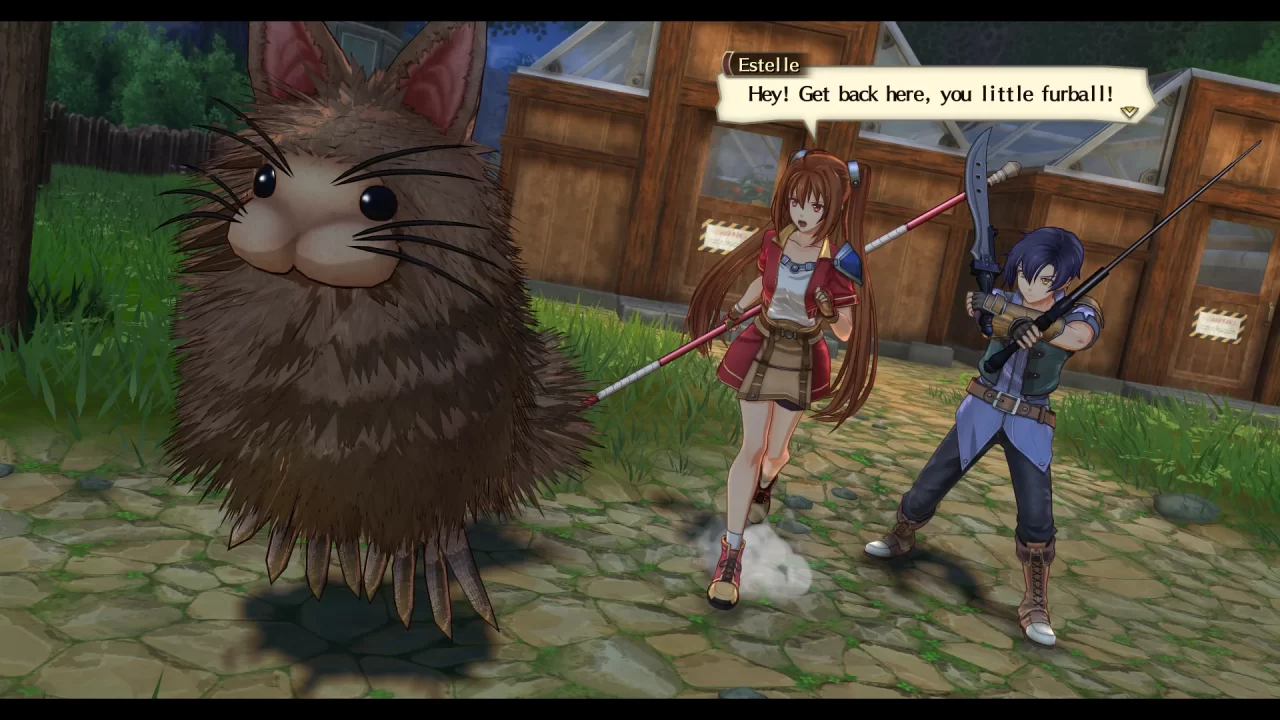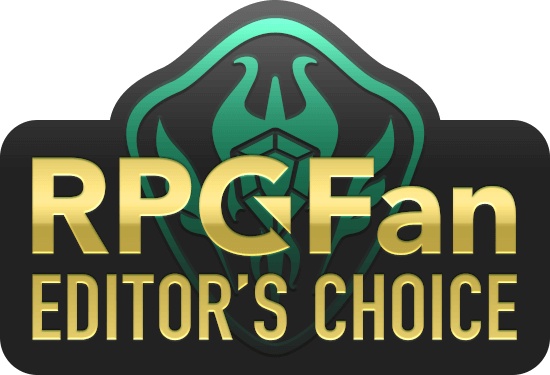For years, I’ve felt a palpable sense of FOMO regarding Nihon Falcom‘s Trails / Kiseki series. Many of my peers are avid fans of it, and their praise inevitably left me with a voice inside my head yelling to stop dawdling and see what all the hype is about. As a longtime sucker for a good JRPG and a fan of Trails‘ sister series Ys, this voice has never stopped its pestering.
However, deciding where to start created serious decision anxiety in me. Even ignoring my extensive backlog, this is a continuity-heavy series with multiple, interlocking plotlines, an expansive world, and an absurdly large cast. Choosing to play one of the later games first risks ruining some of the fun. As such, starting from the beginning with Trails in the Sky FC and playing chronologically is the sensible choice, but with so many entries of intimidating length, my plans for a Trails marathon have repeatedly fallen through. The last one I played to completion was Trails of Cold Steel more than half a decade ago. But now, I’ve finally started my journey through the Zemurian continent in earnest.
Trails in the Sky 1st Chapter arrives just over twenty years after the series’ beginning to remake Sky FC from the ground up. It has completely reworked graphics and aesthetics, modernized RPG combat, and fully-voiced cutscenes for the first time in English, but in many ways it is still the same game. The story beats and dialogue structure are as close to the original as can be, the sidequests are intact, and even specific items remain in the same areas. Having only played through the prologue of that original game, the opportunity to play a version with an identical story, modernized gameplay, and conveniences like fast travel is much appreciated.
While some changes complicate appraising it as a straight vertical upgrade, 1st Chapter is still a strong, well-made game with an enjoyable cast, a gripping story, and a fascinating setting to explore. That it’s only a taste of what’s to come for the nation of Liberl and also standalone enough to feel complete is an accomplishment for a series this massive in scope.
1st Chapter retells the story of Estelle Bright and her adopted brother Joshua, the children of renowned warrior Cassius Bright. Both aspire to follow his example by joining the Bracer Guild, an international organization dedicated to serving the civilian populations of the Zemurian continent. However, when Cassius goes missing during an important mission, Estelle and Joshua follow his trail and stumble upon multiple interlocking plots with devastating implications while fighting sky pirates, mysterious black-clad agents, and lots and lots of monsters.
Between all that fighting, they also take time to work towards a promotion from Junior to Senior Bracers. Sometimes this means fighting threats that imperil the populace, though it just as often means contributing in more mundane ways, like finding lost items or running deliveries. At a surface level, this suggests that the game spins its wheels on busywork. While it’s true that many of these jobs are optional, the player is substantially rewarded for completing them, and they’re better telegraphed than ever before. Even big portions of the main story, such as Chapter Two, can seem fairly low-stakes at first glance. What makes it all work is the way it interacts with the larger world.
One of the core themes explored by Trails is the value in learning about and interacting with other people. Estelle and Joshua encounter multiple new perspectives and charming personalities across their journey, and come to learn that Bracers serve a vital community role beyond mere mercenary work. One of the most memorable sections in the game sees them assist with a play, and surprisingly enough, it ends up being both a fun comedic diversion and a meaningful part of the more serious central plot.
This is also why such a large focus is placed on giving each major location its own atmosphere and history. A great balance is struck between giving Liberl’s various locales a unified sense of culture and distinct economic and social idiosyncrasies, not to mention the subtly brilliant way each location builds on the last. Rolent, the Brights’ hometown, is noticeably rural and isn’t too far removed from most other fantasy RPG towns, but the subsequent cities show increasing levels of modernity and technological development that gradually pull the setting’s deliberately anachronistic style into focus. Even when the capital city, Grancel, subverts this pattern, its position in the plot gives that subversion dramatic weight.
All of this adds up to a satisfying story that simultaneously works as a singular narrative and as a 50-hour prologue for both its direct sequels and the gargantuan saga to follow. And just to make sure you’re hooked, 1st Chapter hits you with a powerful cliffhanger ending on the way out. Any minor conveniences or catches aside, it does its job masterfully.
That being said, there are two notable catches to Trails in the Sky 1st Chapter‘s story. The first concerns Estelle and Joshua’s relationship, which, while I don’t object to the surprising place it goes given their circumstances, could probably benefit from some very slight alterations in how it gets there. The other is a more general complication: the dialogue. It’s not outright bad, though it is nonetheless a sore point.
Checking it against the XSEED’s Sky FC script, the two share their general content, and 1st Chapter still conveys the appeal of the cast. But even before looking at the two releases in comparison, I found 1st Chapter slightly lacking in personality, and comparison to XSEED’s punched-up script only solidifies this assessment. Even though the character voices certainly aren’t written interchangeably, they do feel somewhat restrained. Some frequently awkward phrasing and word choice definitely doesn’t help. While I doubt this is a major problem to any newcomers, it is still noticeable despite my having barely played the original, and Trails die-hards have much to discuss.
It’s a relief, then, that 1st Chapter‘s cast boasts so many talented performers who are able to work with most of those faults. The dialogue’s weaknesses do occasionally manifest in vocal performances, but it is mercifully competent enough that they still come out well overall. Stephanie Sheh and Johnny Yong Bosch reprise their roles as Estelle and Joshua, and given the remarkable frequency with which these two actors star opposite one another, their chemistry here is only to be expected. It’s especially refreshing to hear Sheh in the lead, given that Bosch is usually playing that role.
The supporting players are no slouches either; Matthew Mercer as Olivier, Michael Allen Schneider as Nial, and George Peter as Colonel Richard are only a few of the top-notch actors on display, and I’d go on save for the cast’s size. Even comparatively minor characters like David Lodge’s Professor Alba are well-acted enough to leave huge impressions.
English vocals aren’t the only aesthetic overhaul, and the new models and environments are debatably an even bigger deal. These are probably Falcom’s best-looking 3D models thus far, and the cinematography and animation of key cutscenes and special attacks are genuinely superb, though I do think the original top-down perspective and how it emphasized the characters’ small size compared to the world around them still deserves acknowledgment. Likewise, the environments have a pleasant, welcoming feel, meshing perfectly with the plot’s road trip vibe. Topping it off is an update of an already strong soundtrack that feels right at home with the new look, complete with an all-timer basic battle theme.
The most significant deviation, however, is the combat, which integrates the Brave mechanics from the Cold Steel games and the hybrid combat system from the Daybreak games. While it’s easy at first to avoid using the turn-based Command Battles in favor of real-time Quick Battles, 1st Chapter gradually strikes a good parity between these two systems. And with the Quick Battle mechanics being fairly simple, the nuances of the Command Battles shine even more, with the largely unchanged Orbment customization system allowing for a fun degree of modular character building.
The addition of Daybreak‘s task-based reward system does give access to a lot of useful items earlier than normal, which is thankfully measured enough for the game to maintain a reasonable level of challenge on hard mode. Just keep in mind that this is the rare JRPG where at least half of its playtime is spent without a full party, so I hope you like how the Brights play.
I’m still impressed by how at home Trails in the Sky 1st Chapter feels in its new form two decades down the line. It’s the opening act of an epic, long-running narrative and yet manages to feel down-to-earth and personal. It maintains its tone while updating it to a modern standard of presentation, and despite the stumbles in its dialogue, its characters are relentlessly charming. It’s more than just a great game—it’s a great starting point for a celebrated series, and that’s an utterly invaluable quality for one as daunting as this.






